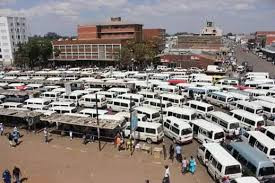
An expensive but vital infrastructure revamp being executed by President Emmerson Mnangagwa’s administration could by far be the biggest headwind confronting Zimbabwe’s new currency - Zimbabwe Gold (ZiG), a poll of leading analysts showed this week.
They said to save ZiG from suffering a similar fate to the Zimbabwe dollar (ZWL), which was ditched on April 5, authorities must avoid resorting to the inflation - inducing printing press to fund the massive infrastructure facelift programme.
Money printing demonstrated its destructive effect during the decade to 2008, when the central bank relied on quantitative easing to salvage a faltering economy, but inevitably led to the collapse of the local currency when inflation hit 500 billion percent.
The infrastructure facelift includes two phases of the Emergency Road Rehabilitation Programme (ERRP), which has been extended.
New dams have also been built under multibillion dollar projects, along with irrigation and other critical infrastructure.
The US$90 million Mbudzi interchange project in Harare and the 580-kilometre Harare – Masvingo - Beitbridge roads facelift are among flagship projects.
Units 7 and 8 at Hwange Power Station were completed at a cost of US$1,5 billion last year, funded through Chinese loans.
For most part, Zimbabwe is executing these projects from internal resources.
- Awards target married couples
- Outcry over state of Binga-Dete road
- Awards target married couples
- Outcry over state of Binga-Dete road
Keep Reading
But experts say the right way to fund big infrastructure projects would be borrowing long term loans from the global financial system which has lower rates of around 2% and longer tenures of up to 25 years.
This way, economies don’t run the risk of printing cash to pay out the bill, which fires up money supply and ignites inflationary pressures.
However, Zimbabwe has been excluded from the global financial system since 1999 after defaulting on repaying loans. In addition, the southern African country has been under various sanctions from the West for policies largely blamed on former leader, the late former President Robert Mugabe, including the seizures of farms from white farmers. Servicing expensively priced loans from the domestic market has led to exponential growth in money supply.
Annual inflation spiralled to 55% in March, the third straight month of a rise after beginning the year at 38% and 47% in February.
The deposed Zimbabwe dollar collapsed by 74% in the first quarter alone, after losing over 99% of its value last year, prompting the government to pivot towards the new currency, ZiG.
According to Finance minister Mthuli Ncube’s budget statement for 2024 presented in November last year, Zimbabwe’s total public and public guaranteed debt was US$17,7 billion as of September 2023.
Of this debt, US$12,7 billion was foreign debt and US$5 billion local. Domestic debt was US$5,2 billion in December 2022.
Felix Mhona the Minister of Transport and Infrastructure Development, admitted during a media tour of the Mbudzi interchange in February that Zimbabwe was paying heavily to upgrade its infrastructure.
“You must bear with us that we are using internal resources and if we were in other countries, you would see that we would get cheap funding, concessional loans, from the World Bank or other institutions. But alas, we are using our funds, which are also having competing effects in terms of the budgetary processes,” Mhona said.
The dangers of borrowing domestically run deeper, analysts say.
According to Chenayi Mutambasere, a development economist, in a highly inflationary economy such as Zimbabwe, there was a risk of inflating of prices by contractors to hedge against currency risks.
“Using the local currency for infrastructure projects may lead to inflated prices,” Mutambasere said.
“Contracts often include provisions to mitigate the risk of currency depreciation. This is especially true for ZiG, which currently lacks physical notes or coins and is not easily exchangeable. Such circumstances could exert pressure on the exchange rate against the US dollar and contribute to inflation.”
Prosper Chitambara, chief economist at the Labour and Economic Development Research Institute of Zimbabwe, said domestic debt had surged due to government’s reliance on internal resources to finance capital projects.
“Definitely domestic debt has increased,” Chitambara said.
“When you look at the numbers, there has been a significant increase in domestic debt on account of the fact that government has to seek recourse to domestic financing of infrastructure projects,” Chitambara said.
Former Finance minister Tendai Biti said he was worried about the cost of roads in Zimbabwe.
“It is clear that internationally, the cost of a road should be around US$1 million per kilometre. But we know that a few of these contractors have been charging as much as US$3 million per kilometre.
This is why the government cannot cope. The economy has no capacity to deal with such unplanned expenditure,” Biti said.
Last year, one of Mnangagwa’s advisors, Busisa Moyo said bonds were the right instruments to fund infrastructure.
Moyo, chairman of the macroeconomic cluster in Mnangagwa’s Presidential Advisory Council said Zimbabwe’s isolation was a major factor.
“We cannot go to Europe to raise a bond to build roads. We are excluded from foreign debt markets, but we want to grow. So, we are in a conundrum,” Moyo said then.










